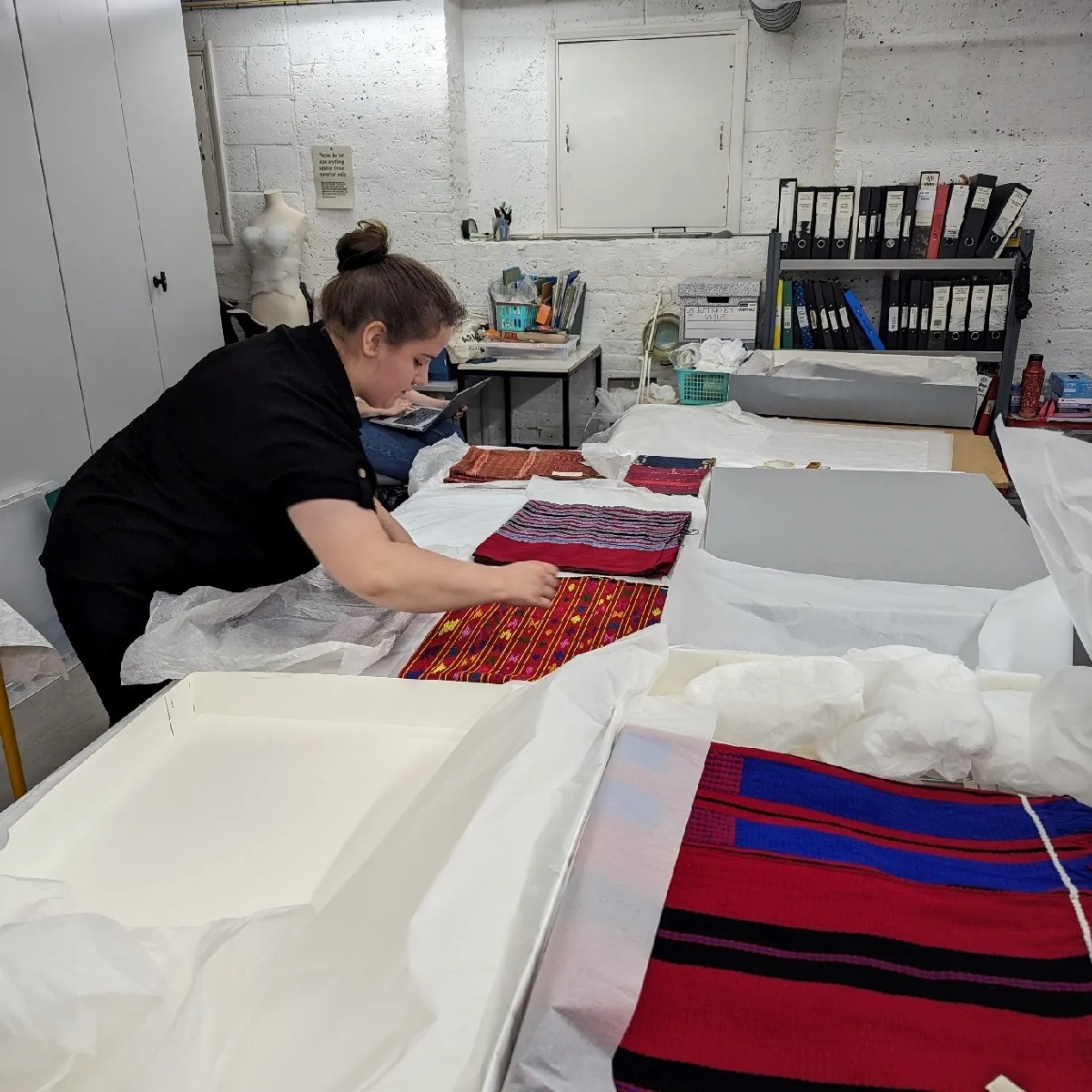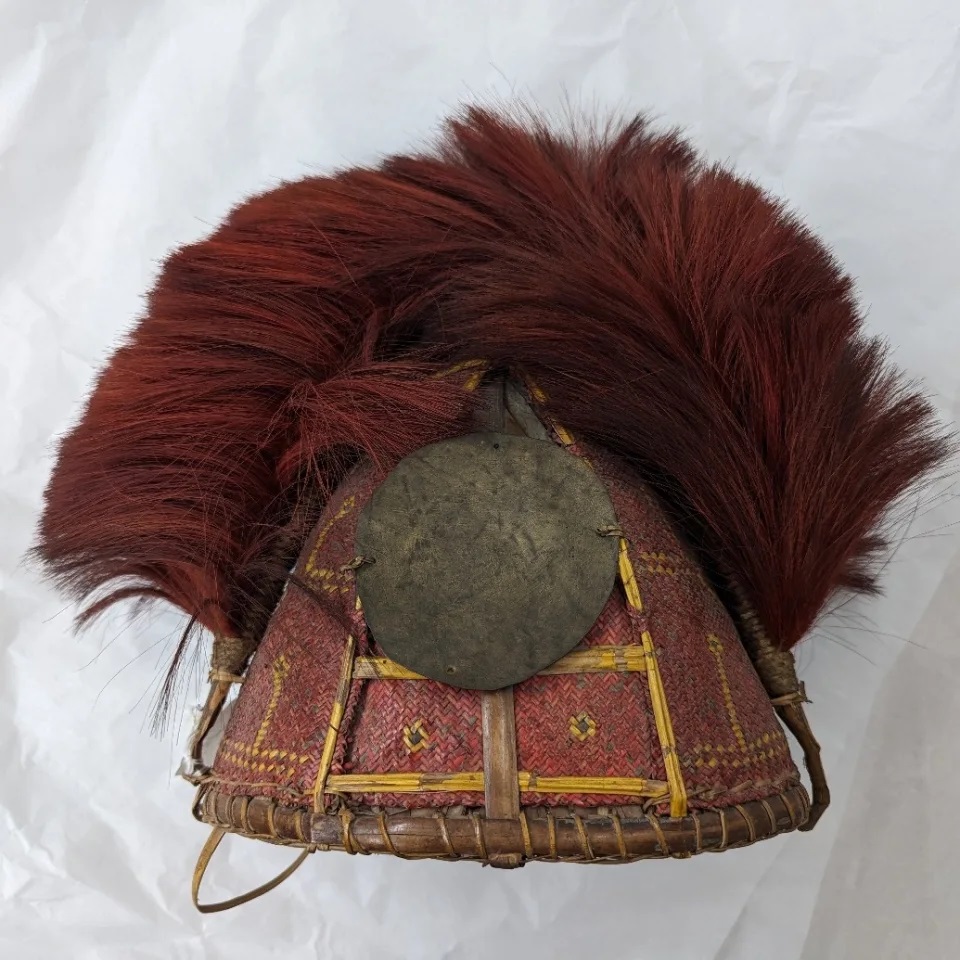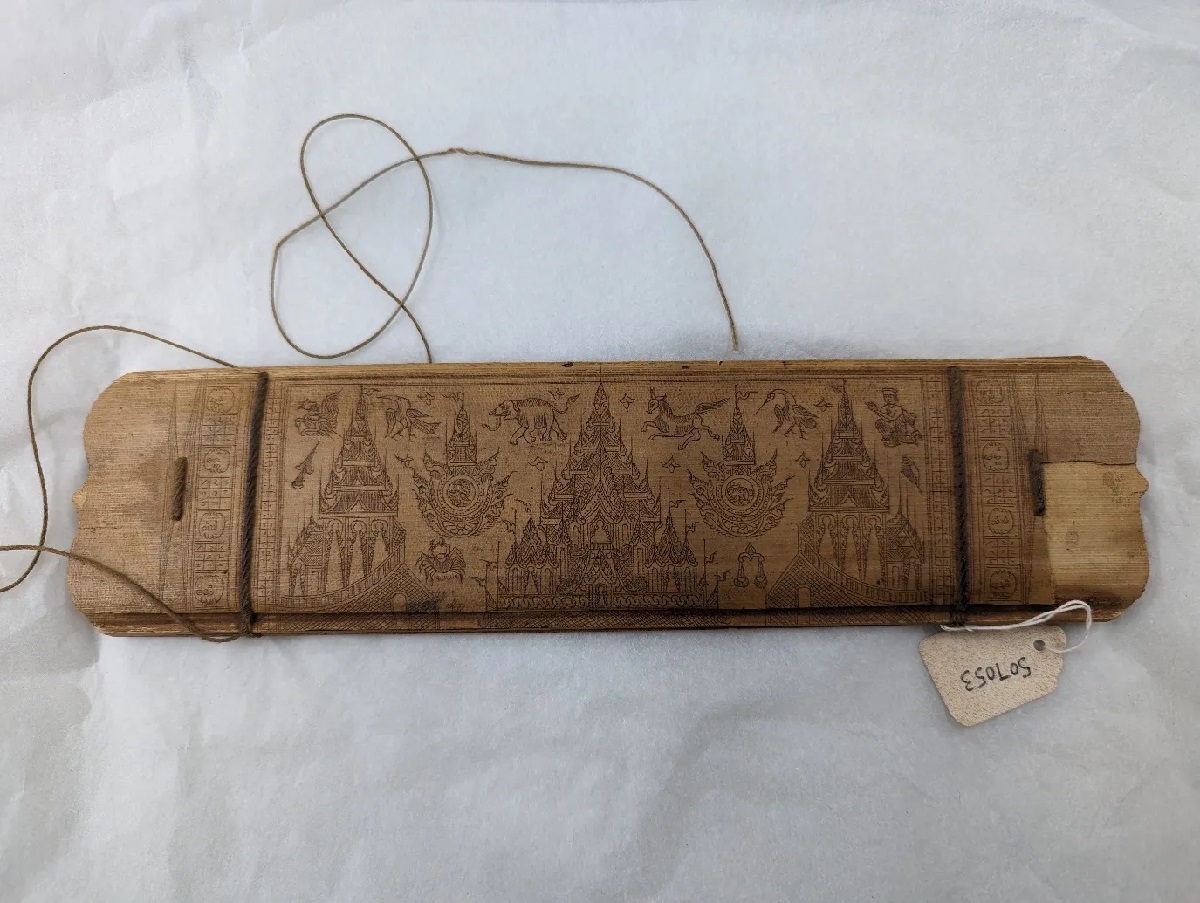Repacking the World Art Textiles
The World Art collections team has been busy working on a project to improve the storage of our textiles collection.
A project was proposed to employ conservators at Zenzie Tinker Conservation to condition check and repack the textiles ready to be moved to our off-site storage.

Throughout this process the World Art team and their colleagues, are improving the documentation of the textiles, by updating object records, creating and linking acquisition records, linking relevant objects together and linking photographs.
This work on the documentation is crucial to the ongoing care of the collection, and is being undertaken with a desire to implement decolonising strategies within collections management.

For example, textiles collected in Africa have historically been stored in ‘Africa Textile’ boxes, and so the team have been repacking the textiles into boxes broken down geographically by country (eg. ‘Nigeria Textile’ boxes).
Conservators will be working on the textiles over the next month, after which we will focus on the big task of moving them to their new home. The team have been working behind the scenes to make space for the textiles, as part of ongoing work to improve storage of the World Art collection.

Throughout the project we have been finding some wonderful objects, such as this manuscript made from palm leaf, and this hat from Burma (Myanmar) made of bamboo, split cane, hair and wood, associated with the Naga cultural group and collected in the 1920s.
